South African designer-maker Shannon Clegg has called her extraordinary series of shaped floral forms Bouquet. Like a traditional bouquet, they are made entirely of plant material, but unlike their namesake, the flowers are skilfully moulded into an elegant vessel form, which allows them to stand alone without a vase to distract from their natural beauty. She says, “I want the pieces to look as though I have just grabbed a bunch of flowers and pulled them out of the ground.”
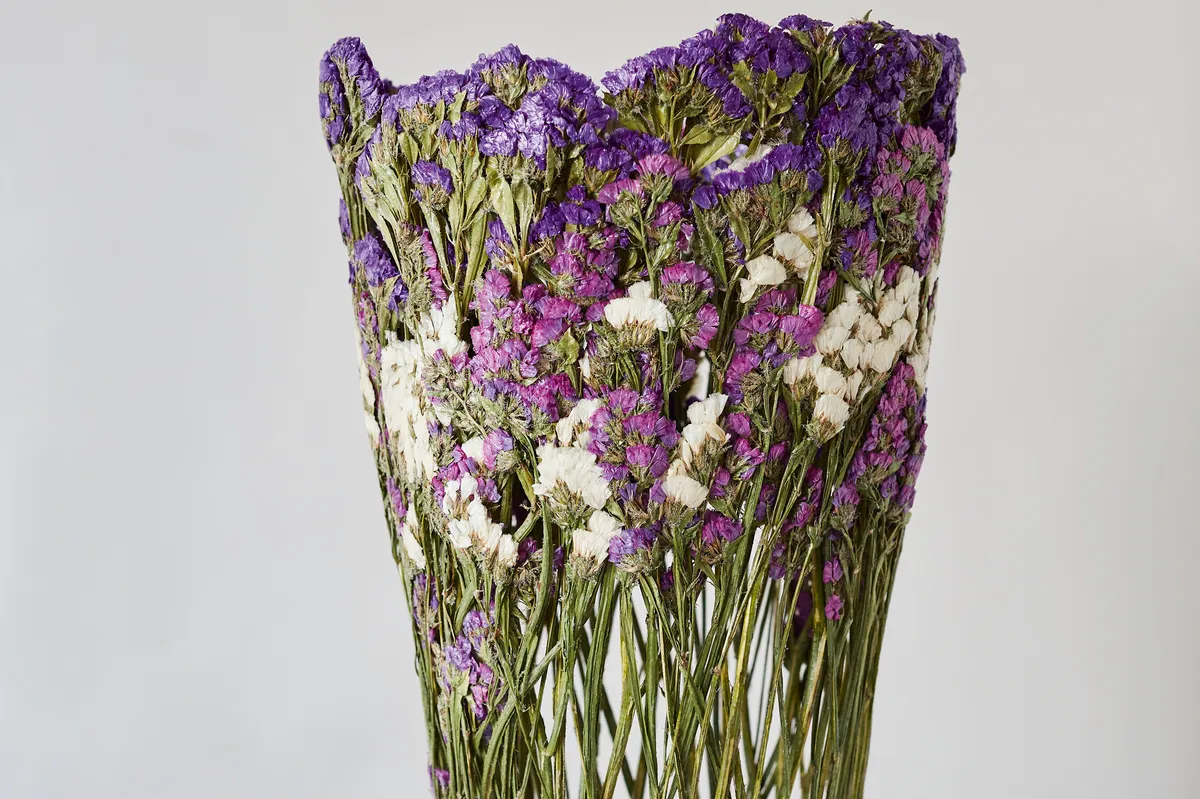
The flower forms evolved as a result of Shannon’s interest in biophilic design, a concept that explores the way objects can enhance people’s wellbeing by indirectly connecting them to nature. “I was trying to work out how I could develop something new that would create a natural experience within the home,” she says. At the time she was doing an MA in product and furniture design at Kingston University London and was exploring ways of incorporating pressed flowers into furniture, but a chance find of an antique wooden tie press got her thinking about different ways of using pressed flowers: “Historically I had always made three-dimensional objects so I thought, ‘How can I use 2D flower pressings three-dimensionally?’”
It was a question that was to take Shannon several years and all her problem-solving skills to answer. “When I started it was really tough, but in a strange way I enjoyed not being able to do it, as I enjoyed working it out.” She eventually used her experience in mould making (learned from her work with ceramics and glass), to develop a way of pressing plants in the round. The technique involves handmaking moulds that she then uses to shape the plant material over several weeks. Shannon has also worked out a process to help retain the flowers’ colour and shape. The final forms – natural, vase-shaped sculptures made out of a delicate lattice of stems and petals – will last for several years. Although their colours gradually fade over time, Shannon has resisted the temptation to encase her pieces in resin (a preservation method used by some designers working with flowers) because of the material’s toxicity; resin would also destroy the organic texture of each of her flower forms, which is so much a part of their appeal.
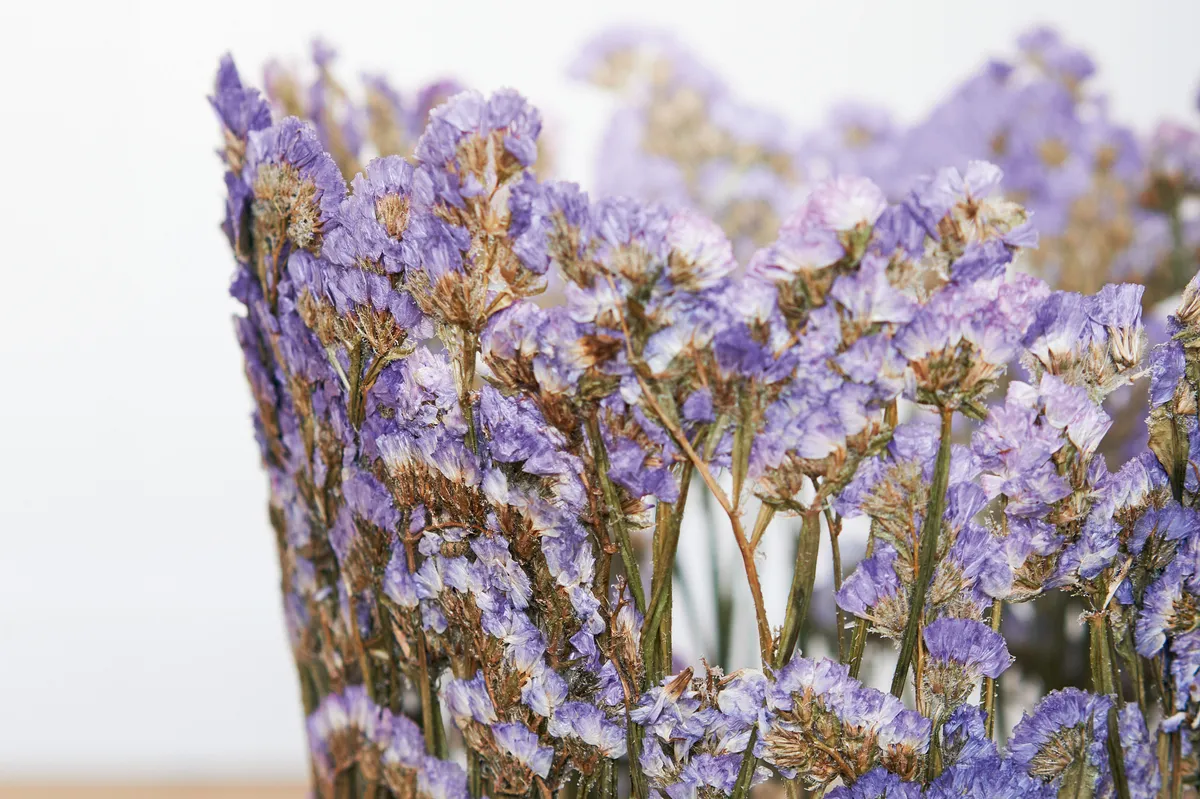
Shannon prefers to work with strong, fibrous flowers such as those from the statice family, as they dry well and have a good range of colours, as well as fynbos flowers from her native South Africa and Australian kangaroo paw. However, she is conscious of the environmental impact of importing flowers, and plans to experiment with native British wildflowers this summer, especially those growing on Walthamstow Marshes, an area near her home that she grew to love during her lockdown walks. She is particularly attracted to the often overlooked flowers and weeds growing there. “I like their marsh-like, quiet tones in greens and browns – I am not sure if they are going to work but I am going to try and press them and see if they do.” Let’s hope that this focus on the local will result in yet more of Shannon’s beautiful, beguiling flower forms. Discover more about Shannon's work below.

Part of Shannon’s Bouquet series, this pressed-flower vase is made from layers of different coloured statice (Limonium sinuatum); Shannon enjoys working with statice as its stems are relatively strong, it grows in a variety of different shades and it retains its colours well.

Using a variety of different length stems allows Shannon to give the vases a delicate, flowing rim that underlines the fact that they are made entirely by hand from flowers.

This antique wooden tie press, found in a car boot sale, was the catalyst behind Shannon’s flower forms; it inspired her to explore how to press flowers in the round.
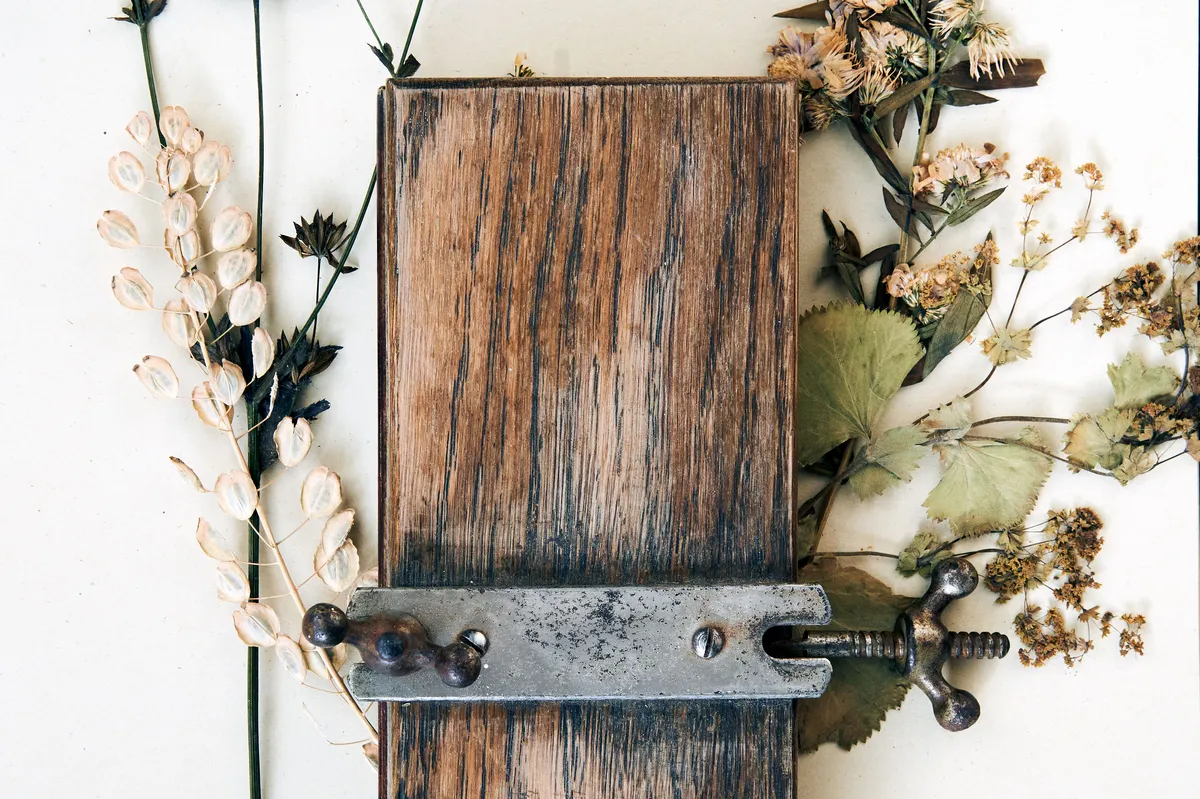
Shannon designed and made a wooden flower press in a bid to encourage buyers to press flowers themselves. She also designed folders and notebooks in which to store the pressed flowers.

Shannon experiments with different flowers to see how they change with age. She is currently interested in researching wildflowers from Walthamstow Marshes, including wild carrot, yarrow and curled dock.

Taking advantage of the delicate shadows her flower pressings create, Shannon would like to develop a range of light shades for the home; she is also interested in collaborating with a designer to make headpieces.
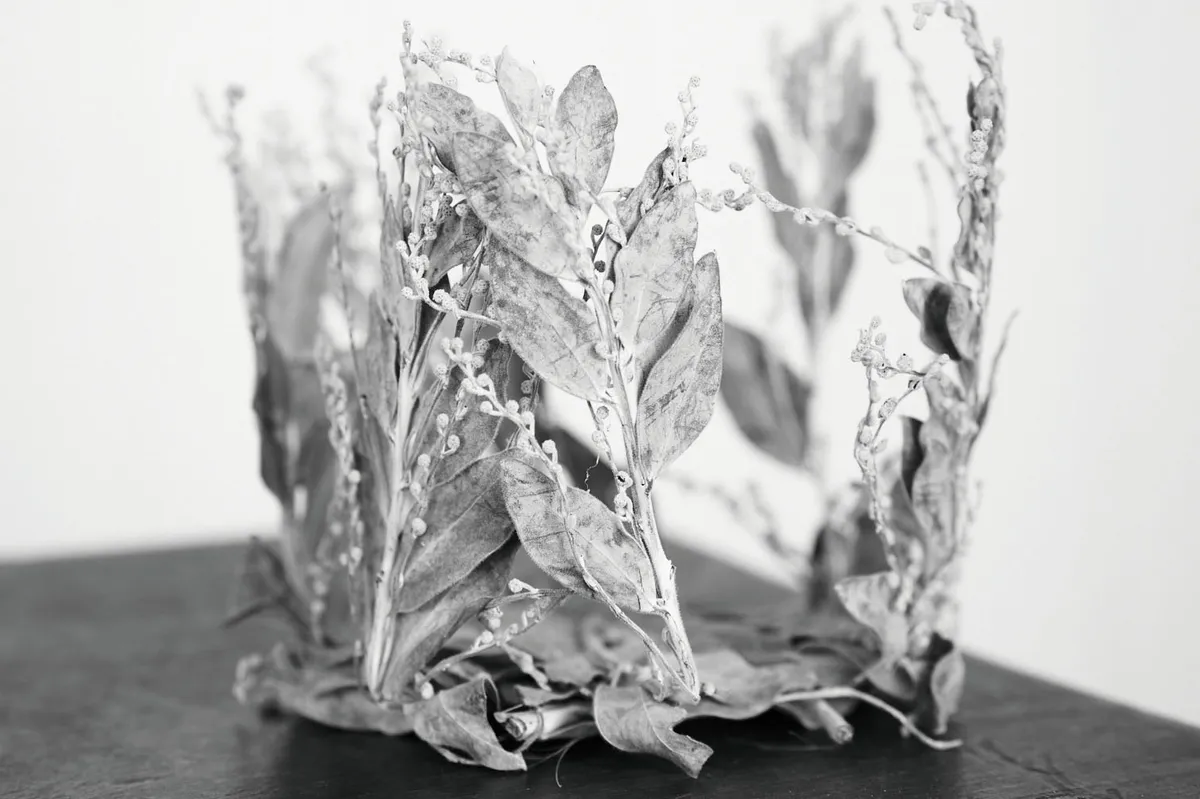
Florilegium is a series of products Shannon created that focuses on traditional pressed flowers; this includes a table decorated with a variety of British garden and wildflowers sandwiched between sheets of glass.
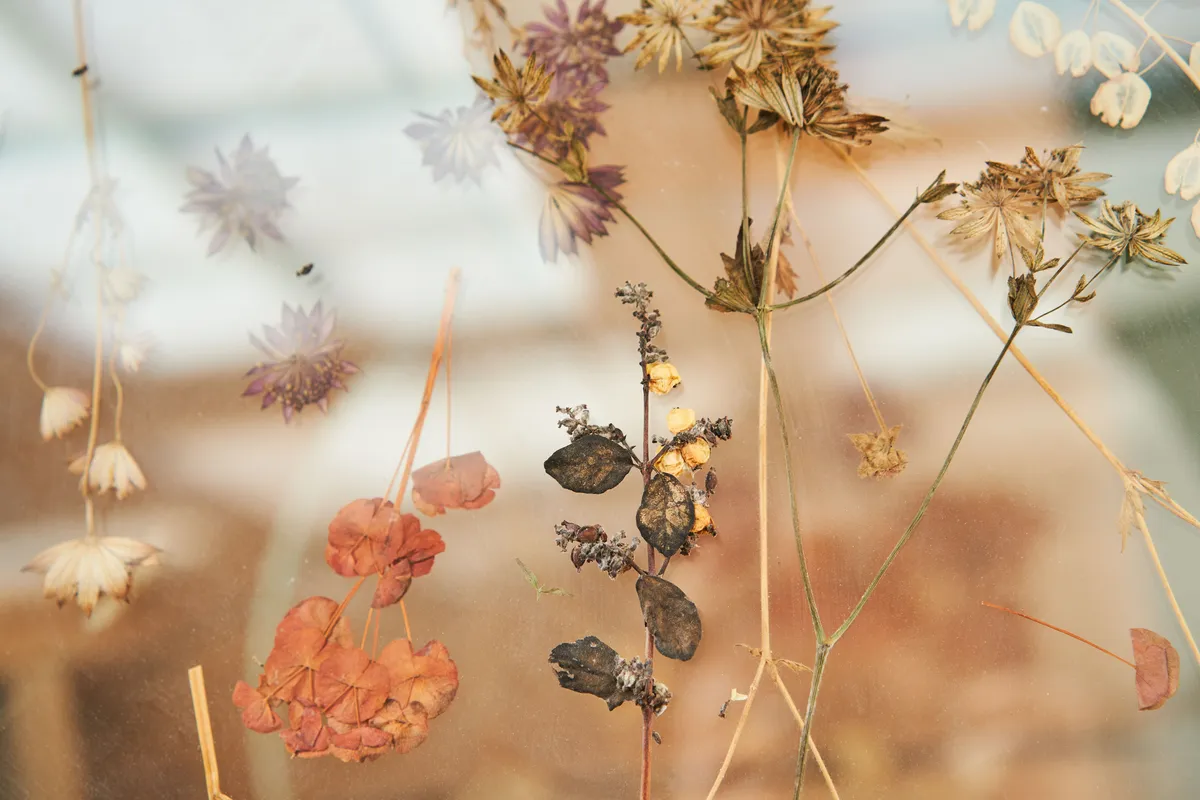
A desire to create objects using natural materials with the aim of allowing the user to experience the benefits of nature within the home environment is what led Shannon to work with pressed flowers in this innovative way.
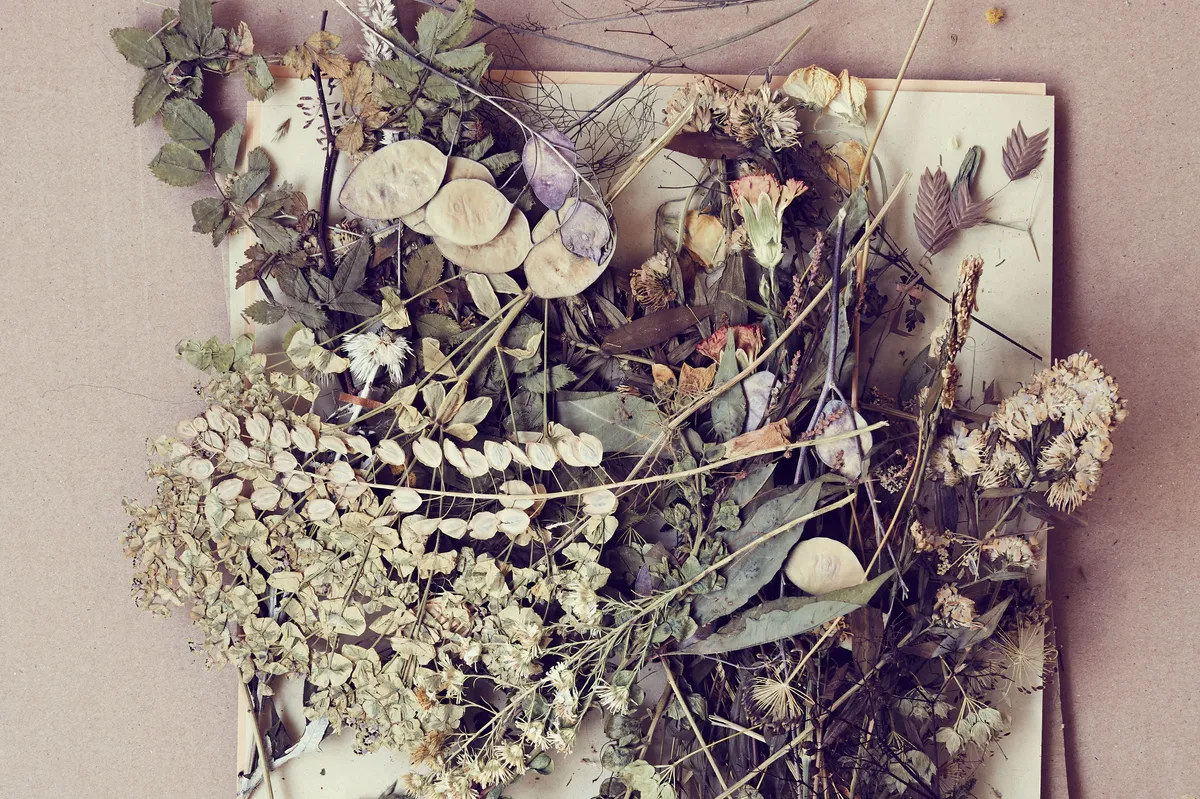
Shannon pressed a selection of British flowers in order to research how their structure and colour changes; all the flowers here are grown in Cheshire by Charlotte Smithson.

Unlike a normal flower arrangement, Shannon’s Bouquet vases, shown here made from burgundy kangaroo paw flowers, will last several years if kept out of direct sunlight. She believes that the natural changes to colour that slowly take place as the flower forms age are part of their naturally evolving appeal.
Find out more about Shannon’s work at shannonclegg.co.uk Shannon will be exhibiting at Homo Faber: Crafting a More Human Future, Venice, Italy. 10 April – 1 May. homofaber.com London Craft Week, 9-15 May. londoncraftweek.com